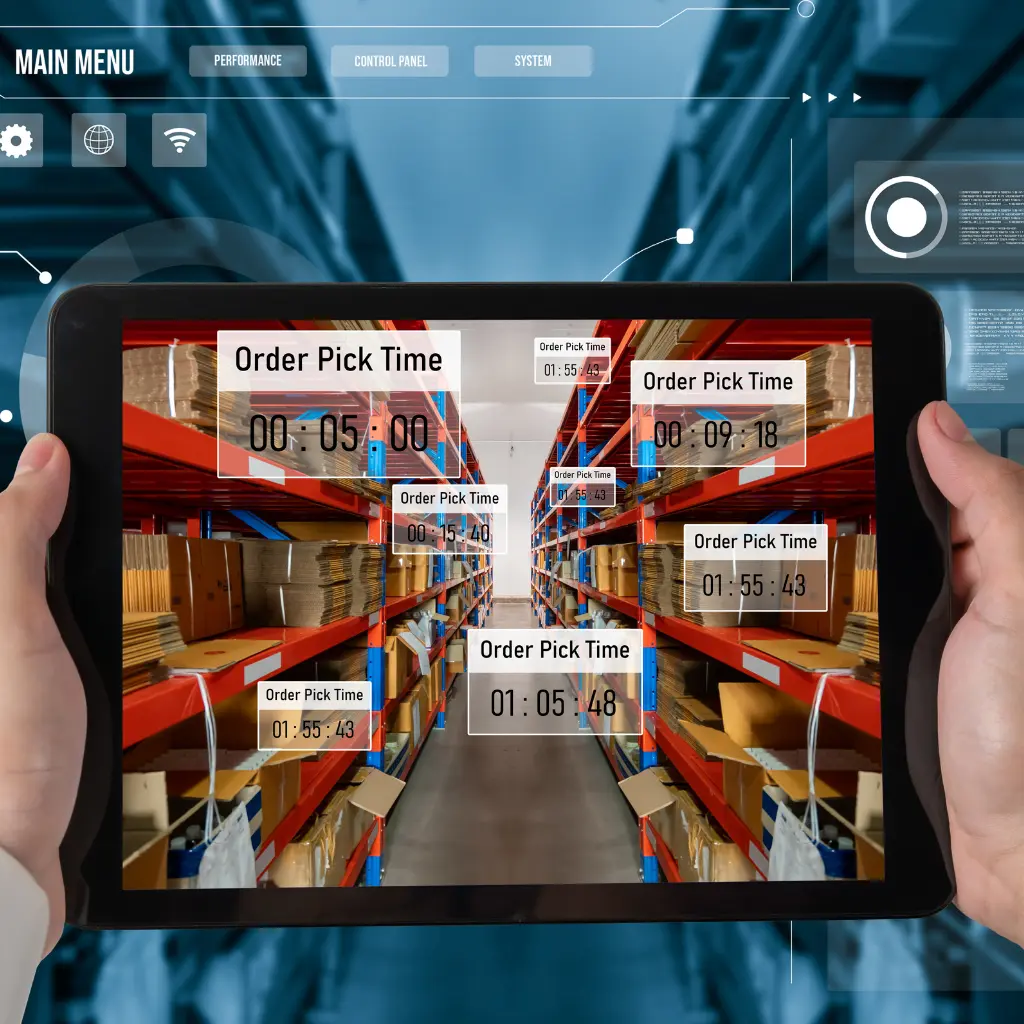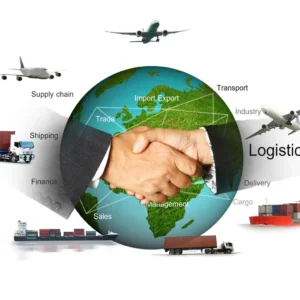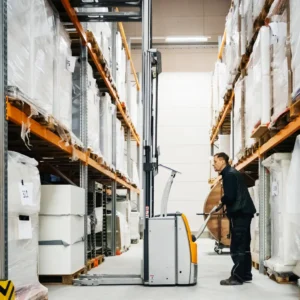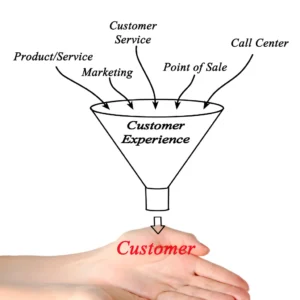
Navigating Logistics
Transformative AI Tools for Warehouse Management and Automation in the Industry Revolution
This discussion delves into the transformative potential of AI tools within the logistics industry, specifically focusing on Warehouse Management and Automation.
In the ever-evolving logistics landscape, integrating Artificial Intelligence (AI) tools has emerged as a pivotal force, revolutionizing Warehouse Management and Automation.
From optimizing inventory levels to automating order fulfilment processes, each tool represents a strategic advancement in improving efficiency, minimizing downtime, and enhancing overall operational reliability within the dynamic logistics ecosystem.
This article aims to unravel the nuances of each tool, offering insights into their implementation challenges, recommendations, and the cost-benefit dynamics that drive their adoption in the logistics domain.
Table of Contents

Arindam Roy
An Automation Consultant with 25+ years of IT Experience
5 AI Tool ideas for Warehouse Management and Automation
AI Tools for Warehouse Management and Automation in the Transportation and Logistics industry below are well-aligned with the current trends in leveraging AI for operational efficiency. Let’s elaborate on each of them:
AI-Powered Inventory Forecasting:
- Description: This tool uses machine learning algorithms to analyze historical data, current inventory levels, and external factors like seasonality, market trends, and promotions to predict future demand accurately.
- Benefits: Helps optimize inventory levels, reduces carrying costs, minimizes stockouts, and improves overall supply chain efficiency.
Autonomous Inventory Drones:
- Description: Drones equipped with computer vision and AI algorithms navigate through warehouse shelves to perform real-time inventory checks. They can identify misplaced items, monitor stock levels, and update the inventory system automatically.
- Benefits: Speeds up inventory audits, reduces manual labour, minimizes human errors, and enhances overall accuracy in tracking inventory.
Automated Order Picking and Packing:
- Description: AI-powered robotic systems are employed to pick and pack items from the warehouse shelves based on real-time orders. These systems can optimize the picking route, identify the right items, and efficiently pack them for shipping.
- Benefits: Increases order fulfilment speed, reduces picking errors, enhances warehouse productivity, and ensures timely and accurate order processing.
Predictive Maintenance for Equipment:
- Description: Utilizes AI algorithms to analyze data from sensors and other sources to predict when warehouse equipment, such as conveyor belts, forklifts, or packaging machines, will likely fail. This enables proactive maintenance to prevent downtime.
- Benefits: Minimizes unplanned downtime, extends equipment lifespan, reduces maintenance costs, and improves overall operational reliability.
AI-Enhanced Slotting Optimization:
- Description: AI algorithms optimize the placement of items within the warehouse based on factors like demand patterns, picking frequency, and storage constraints. This ensures that frequently picked items are placed in easily accessible locations.
- Benefits: Improves warehouse efficiency, reduces pick travel time, maximizes space utilization, and enhances overall order fulfilment speed.
Implementing these AI tools in Warehouse Management and Automation can lead to a more streamlined, efficient, and cost-effective operation in the Transportation and Logistics industry. It enables businesses to respond dynamically to changing demands, minimize errors, and stay competitive in the fast-paced logistics landscape.
AI-Powered Inventory Forecasting
Building an AI-powered Inventory Forecasting tool for Warehouse Management and Automation in the Logistics Industry involves a comprehensive understanding of business, software, hardware, integration, training, challenges, existing tools, and cost-benefit analysis. Let’s delve into each of these aspects:
Business Knowledge Requirements:
- Logistics and Supply Chain Expertise: Understanding the intricacies of logistics, supply chain dynamics, and the factors influencing demand is crucial. This knowledge is essential for fine-tuning the machine learning algorithms to predict inventory needs accurately.
- Market Trends Analysis: Continuous monitoring of market trends, seasonality, and external factors affecting the transportation and logistics industry is necessary. This knowledge helps in refining forecasting models to align with real-world conditions.
Software Requirements:
- Machine Learning Frameworks: Utilize machine learning frameworks like TensorFlow or PyTorch to implement the predictive algorithms. These frameworks offer tools and libraries for developing and training machine learning models.
- Data Integration and Analysis Tools: Implement tools for data integration from various sources (historical data, current inventory levels, market trends) and analysis tools to preprocess and extract meaningful insights from the data.
- User Interface (UI) and User Experience (UX) Design: Develop an intuitive UI for users to interact with the tool easily. UX design is crucial to ensure that logistics professionals can interpret and act upon the forecasted data effectively.
Hardware Requirements:
- High-Performance Computing (HPC) Infrastructure: A robust HPC infrastructure is required to handle large datasets and complex machine learning models. This may include powerful servers or cloud computing resources.
Integration Requirements to the Existing Toolset:
- ERP (Enterprise Resource Planning) Systems Integration: Ensure seamless integration with existing ERP systems for data consistency and real-time updates across the organization.
- Compatibility with Transportation Management Systems (TMS): The tool should integrate with TMS for effective route optimization and planning, aligning inventory forecasting with the transportation processes.
Training Required for Existing Staff to Run the Tool:
- Data Science and AI Training: Provide training to existing staff involved in inventory management on interpreting and utilizing the AI-powered forecasts effectively. This may include basic data science and machine learning concepts.
Challenges and Workarounds in Implementing the Tool:
- Data Quality and Availability:
- Challenge: Only complete or good-quality data can impact the accuracy of forecasts.
- Workaround: Implement data cleansing techniques and establish protocols for data quality maintenance.
- Resistance to Change:
- Challenge: Staff may only accept AI-based tools due to fear of job displacement.
- Workaround: Promote the tool to complement human decision-making, emphasizing its ability to enhance efficiency rather than replace jobs.
Similar Tools Already Available in the Market:
- Oracle SCM Cloud: Offers AI-driven forecasting and demand management features.
- Blue Yonder (formerly JDA Software): Provides advanced supply chain and inventory optimization solutions.
Cost and Benefit Analysis:
- Costs:
- Development Costs: Includes hiring data scientists, developers, and UI/UX designers.
- Infrastructure Costs: Hardware and cloud computing expenses.
- Training Costs: Invest in training programs for existing staff.
- Benefits:
- Reduced Carrying Costs: Optimal inventory levels lead to reduced carrying costs.
- Improved Efficiency: Enhanced supply chain efficiency and minimized stockouts.
- Competitive Advantage: Improved planning contributes to a competitive edge.
Recommendation:
Given the complexity and expertise required in developing an AI-powered Inventory Forecasting tool, the recommendation would be a hybrid approach:
- Build Core Functionality: Develop the in-house core forecasting algorithms and features to align closely with specific business needs.
- Integrate with Existing Products: Integrate the tool with existing off-the-shelf products for ERP, TMS, or other relevant systems.
This approach leverages the organization’s expertise in the logistics industry while benefiting from established tools for specific functionalities. It also ensures a more rapid implementation, reducing time-to-market and minimizing development costs.
Autonomous Inventory Drones
Building an Autonomous Inventory Drone tool for Warehouse Management and Automation in the Logistics Industry requires careful consideration of business, software, hardware, integration, training, challenges, existing tools, and cost-benefit analysis. Let’s explore each aspect:
Business Knowledge Requirements:
- Logistics Operations Understanding: In-depth knowledge of warehouse operations, layout, and inventory management is crucial to designing drones that can effectively navigate the environment.
- Regulatory Compliance Knowledge: Familiarity with local and international regulations regarding warehouse drone usage is essential for legal compliance and operational safety.
Software Requirements:
- Computer Vision Algorithms: Implement advanced computer vision algorithms to enable drones to recognize and navigate the warehouse environment, identify items accurately, and update the inventory system.
- AI Navigation Systems: Develop AI algorithms for autonomous navigation, obstacle avoidance, and optimal path planning to ensure efficient inventory checks.
- Communication Protocols: Establish robust communication protocols for seamless interaction between drones and the central inventory management system.
Hardware Requirements:
- Drone Hardware: Select or design drones with the necessary sensors (cameras, lidar, etc.), computing power, and communication capabilities for effective inventory monitoring.
- Charging and Maintenance Infrastructure: Develop or invest in charging stations and maintenance infrastructure for the drones to ensure uninterrupted operations.
Integration Requirements to the Existing Toolset:
- Inventory Management System Integration: Integrate the drone system with the existing inventory management system for real-time updates and synchronization of inventory data.
- Collaboration with Warehouse Management Systems (WMS): Ensure compatibility with WMS to incorporate drone data into broader warehouse operations seamlessly.
Training Required for Existing Staff to Run the Tool:
- Drone Operation Training: Provide warehouse staff training on safely operating and supervising the autonomous inventory drones.
- System Monitoring and Troubleshooting: Train staff on monitoring the system, interpreting drone data, and addressing any issues or anomalies that may arise.
Challenges and Workarounds in Implementing the Tool:
- Regulatory Compliance Challenges:
- Challenge: Adhering to complex drone regulations.
- Workaround: Collaborate with regulatory authorities, stay updated on regulations, and design the system with compliance in mind.
- Obstacle Avoidance:
- Challenge: Ensuring drones can navigate warehouses with dynamic layouts and avoid obstacles.
- Workaround: Implement robust obstacle detection and avoidance algorithms and regularly update the system based on warehouse changes.
Similar Tools Already Available in the Market:
- Dronomy: Offers warehouse inventory management using autonomous drones.
- FlytWare: Provides drone solutions for real-time warehouse inventory tracking.
Cost and Benefit Analysis:
- Costs:
- Development Costs: Include expenses for designing the drone hardware, developing software algorithms, and establishing communication infrastructure.
- Training Costs: Invest in training programs for staff to operate and monitor the drone system.
- Benefits:
- Efficiency Gains: Speeds up inventory audits, reduces manual labour, and minimizes errors, enhancing operational efficiency.
- Accuracy Improvements: Provides real-time and accurate inventory data, improving overall inventory tracking and planning.
Recommendation:
Given the complexity and specialized nature of developing autonomous inventory drones, a hybrid approach is recommended:
- Build Core Functionality: Develop the core algorithms and features in-house, aligning them closely with specific business needs and warehouse operations.
- Integrate with Existing Products: Integrate the drone system with existing off-the-shelf products for inventory management and warehouse operations, ensuring compatibility and reducing development time.
A strategic blend of building from scratch and integrating with existing products can result in a powerful and efficient Autonomous Inventory drone system that addresses the unique demands of the Transportation and Logistics industry.
Automated Order Picking and Packing
Let’s explore each aspect of building an AI Automated Order Picking and Packing tool for Warehouse Management and Automation in the Logistics Industry in detail:
Business Knowledge Requirements:
- Warehouse Operations Understanding: In-depth knowledge of warehouse layout, item categorization, and order fulfilment processes is essential for designing efficient picking and packing algorithms.
- Order Processing Dynamics: Understanding the nuances of order processing, picking priorities, and packing requirements are crucial for optimizing the tool for specific business needs.
Software Requirements:
- Robotics Process Automation (RPA) Software: Implement RPA software with AI capabilities to orchestrate robotic systems for optimal order picking and packing.
- Machine Learning Algorithms: Utilize machine learning algorithms to optimize picking routes, identify items accurately, and continuously improve the system’s efficiency based on historical data.
- Order Management System (OMS): Integrate with OMS to receive real-time order data, prioritize orders based on urgency, and ensure seamless coordination with the rest of the logistics chain.
Hardware Requirements:
- Robotics Systems: Invest in robotic systems with sensors, grippers, and actuators for picking and packing tasks.
- Warehouse Automation Infrastructure: Develop or upgrade the warehouse infrastructure to support automated systems, including conveyor belts, storage systems, and packing stations.
Integration Requirements to the Existing Toolset:
- Integration with OMS and Inventory Management: Ensure seamless integration with existing OMS and inventory management systems to maintain accurate real-time data on available stock and incoming orders.
- Compatibility with Warehouse Management Systems (WMS): Integrate with WMS to synchronize data, optimize warehouse layout, and coordinate with other warehouse operations.
Training Required for Existing Staff to Run the Tool:
- System Supervision Training: Train warehouse staff in supervising and monitoring the automated picking and packing system, including handling exceptions and addressing issues.
- Maintenance Training: Train maintenance staff to troubleshoot and perform routine maintenance on the robotic systems.
Challenges and Workarounds in Implementing the Tool:
- Integration Complexity:
- Challenge: Integrating the tool seamlessly with existing systems.
- Workaround: Collaborate closely with IT teams and system providers, ensuring compatibility through API integration and standardized data formats.
- Dynamic Warehouse Environments:
- Challenge: Adapting to changes in warehouse layouts and inventory positioning.
- Workaround: Implement algorithms that dynamically adjust to changes and conduct regular assessments to optimize system performance.
Similar Tools Already Available in the Market:
- Kiva Systems (now Amazon Robotics): Offers robotic solutions for order fulfilment and warehouse automation.
- Fetch Robotics: Provides autonomous mobile robots for warehouse material handling and order fulfilment.
Cost and Benefit Analysis:
- Costs:
- Development Costs: Include expenses for designing algorithms, software development, and integrating with existing systems.
- Hardware Costs: Investment in robotic systems, infrastructure, and necessary equipment.
- Training Costs: Budget for training existing staff and hiring specialized personnel.
- Benefits:
- Increased Efficiency: Accelerates order fulfilment, reduces picking errors, and enhances warehouse productivity.
- Cost Savings: Reduces labour costs associated with manual picking and packing.
- Improved Accuracy: Ensures timely and accurate order processing, minimizing fulfilment errors.
Recommendation:
Considering the specialized nature of Automated Order Picking and Packing tools and the availability of established solutions in the market, a balanced approach is recommended:
- Buy Off-The-Shelf or Integrate with Similar Products:
- Evaluate existing tools in the market that align with specific business needs.
- Consider customization or integration to complement existing logistics processes.
This approach leverages the expertise and infrastructure already in the market, reducing development time and costs. It also allows for faster implementation and immediate benefits. However, customization might be necessary to align the tool closely with unique business requirements.
Considering the rapid advancements in warehouse automation and order fulfilment technologies, a strategic balance of leveraging existing solutions and potential customization is recommended.
Predictive Maintenance for Equipment
Building an AI-powered Predictive Maintenance tool for equipment in the Logistics Industry involves several considerations. Let’s delve into each aspect in detail:
Business Knowledge Requirements:
- Logistics Equipment Understanding: In-depth knowledge of the types of equipment used in logistics operations, such as conveyor belts, forklifts, and packaging machines, is crucial for understanding failure patterns and maintenance needs.
- Maintenance Processes Familiarity: Understanding existing maintenance processes, schedules, and the impact of equipment downtime on overall logistics operations is essential for effective predictive maintenance planning.
Software Requirements:
- Machine Learning Algorithms: Develop or implement machine learning algorithms capable of accurately analyzing data from sensors and historical records to predict equipment failures.
- Data Integration and Analysis Tools: Implement tools for integrating data from various sources, cleaning and preprocessing the data, and conducting advanced analytics to identify patterns indicative of potential equipment failures.
- Dashboard and Reporting Systems: Develop user-friendly dashboards and reporting systems to present predictive maintenance insights to maintenance teams and decision-makers.
Hardware Requirements:
- Sensor Networks: Install or upgrade sensor networks on critical equipment to collect real-time data on temperature, vibration, and usage patterns.
- Edge Computing Infrastructure: Implement edge computing capabilities near the equipment to process real-time data and reduce latency in predictive maintenance alerts.
Integration Requirements to the Existing Toolset:
- Integration with Equipment Sensors: Ensure seamless integration with existing sensors on equipment to collect real-time data and trigger predictive maintenance alerts.
- Compatibility with Maintenance Management Systems: Integrate with existing maintenance management systems to schedule and track proactive maintenance tasks seamlessly.
Training Required for Existing Staff to Run the Tool:
- Data Interpretation and Action Planning: Train maintenance staff on interpreting predictive maintenance alerts, understanding the severity of potential issues, and planning proactive maintenance actions.
- Tool Utilization Training: Provide comprehensive training on using the predictive maintenance tool, including data input, interpreting results, and integrating it into existing workflows.
Challenges and Workarounds in Implementing the Tool:
- Data Quality and Availability:
- Challenge: Ensuring the quality and availability of accurate data from sensors.
- Workaround: Implement rigorous data validation processes, conduct regular sensor maintenance, and ensure data redundancy.
- Resistance to Predictive Maintenance Adoption:
- Challenge: Resistance from maintenance teams accustomed to traditional schedules.
- Workaround: Communicate the benefits of predictive maintenance, demonstrate success stories, and involve maintenance teams in the implementation process.
Similar Tools Already Available in the Market:
- IBM Maximo Asset Monitor: Offers predictive maintenance capabilities for various industries, including logistics and Transportation.
- PTC ThingWorx: Provides an industrial IoT platform with predictive maintenance features for monitoring and managing equipment health.
Cost and Benefit Analysis:
- Costs:
- Development Costs: Include expenses for designing algorithms, software development, and dashboard creation.
- Sensor Installation Costs: Invest in installing or upgrading sensors on critical equipment.
- Training Costs: Budget for training maintenance staff on the new tool and processes.
- Benefits:
- Reduced Downtime: Minimizes unplanned downtime, ensuring continuous logistics operations.
- Extended Equipment Lifespan: Enhances equipment longevity, reducing the frequency of replacements.
- Cost Savings: Reduces maintenance costs by avoiding emergency repairs and optimizing maintenance schedules.
Recommendation:
Given the complexity of developing a Predictive Maintenance tool and the availability of established solutions in the market, a balanced approach is recommended:
- Buy Off-The-Shelf or Integrate with Similar Products:
- Evaluate existing tools with proven track records in predictive maintenance for the logistics industry.
- Consider customization or integration to align the tool with specific business needs.
This approach allows for faster implementation and immediate benefits. However, customization might be necessary to align the tool closely with unique business requirements. So, a strategic balance of leveraging existing solutions and potential customization is recommended.
AI-Enhanced Slotting Optimization
Building an AI-enhanced slotting Optimization tool for Warehouse Management and Automation in the Logistics Industry requires a thorough understanding of various aspects. Let’s explore each point in detail:
Business Knowledge Requirements:
- Warehouse Operations Understanding: In-depth knowledge of warehouse layout, storage configurations, and picking processes is essential for developing algorithms that align with specific logistics requirements.
- Inventory Management Expertise: Understanding inventory dynamics, demand patterns, and storage constraints ensures that AI algorithms can effectively optimize the slotting of items.
Software Requirements:
- Machine Learning and Optimization Algorithms: Develop or integrate machine learning algorithms to analyze historical data and optimize item placement based on demand patterns, picking frequency, and storage constraints.
- Data Integration and Analytics Tools: Implement tools for data integration from various sources, including historical order data, inventory levels, and picking frequencies. Analytics tools are necessary to process and derive actionable insights from this data.
- User Interface (UI) and Visualization Tools: Develop an intuitive UI for users to interact with the optimization tool. Visualization tools help in understanding the impact of slotting changes on warehouse efficiency.
Hardware Requirements:
- Server Infrastructure: Depending on the scale of operations, invest in server infrastructure to handle the computational load of optimization algorithms and data processing.
- Warehouse Automation Technology: Integration with existing warehouse automation technologies, such as conveyor systems and robotics, may be required to leverage slotting optimization benefits fully.
Integration Requirements to the Existing Toolset:
- Warehouse Management System (WMS) Integration: Seamless integration with WMS is crucial to synchronize slotting changes with the broader warehouse management processes.
- Compatibility with Order Management Systems (OMS): Ensure compatibility with OMS to align slotting decisions with order processing requirements.
Training Required for Existing Staff to Run the Tool:
- Tool Utilization Training: Provide training for warehouse staff involved in slotting decisions on how to use and interpret the AI-enhanced optimization tool.
- Change Management Training: Since optimized slotting may require changes in daily operations, training should include change management aspects to ensure smooth adoption.
Challenges and Workarounds in Implementing the Tool:
- Data Quality and Availability:
- Challenge: Ensuring accurate and up-to-date data for effective optimization.
- Workaround: Implement data validation processes and establish protocols for maintaining data accuracy.
- Operational Disruption:
- Challenge: Changes in slotting might disrupt ongoing operations.
- Workaround: Implement changes during low-demand periods or gradually introduce optimizations to minimize disruption.
Similar Tools already available in the market:
- Llamasoft (now Coupa): Offers supply chain optimization solutions, including slotting optimization.
- Blue Yonder (formerly JDA Software): Provides warehouse management solutions with advanced slotting optimization features.
Cost and Benefit Analysis:
- Costs:
- Development Costs: Include expenses for designing and implementing the optimization algorithms and user interface.
- Infrastructure Costs: Investment in server infrastructure and potential upgrades to warehouse automation technologies.
- Training Costs: Budget for training existing staff on the new tool.
- Benefits:
- Efficiency Gains: Improves warehouse efficiency, reduces pick travel time, and maximizes space utilization.
- Increased Throughput: Enhances overall order fulfillment speed, contributing to customer satisfaction.
- Cost Savings: Optimized slotting can reduce labour costs and more efficient space utilization.
Recommendation:
Given the complexity of developing a slotting optimization tool and the availability of established solutions in the market, a hybrid approach is recommended:
- Integrate with Similar Available Products:
- Evaluate existing slotting optimization tools in the market and integrate them with a solution that closely aligns with specific business needs.
- Consider customization to ensure the tool seamlessly integrates with existing logistics processes.
A strategic balance of leveraging existing solutions and potential customization is recommended.
Conclusion on AI tools for Warehouse Management and Automation
In conclusion, deploying AI tools for warehouse management and automation in the logistics industry presents a transformative opportunity for enhancing operational efficiency and meeting the market’s dynamic demands. The recommendations for each tool highlight a pragmatic approach, emphasizing a balance between building core functionalities and leveraging existing solutions. This hybrid strategy allows organizations to capitalize on their industry expertise while benefiting from established tools, reducing development time and costs.
Challenges such as data quality assurance, regulatory compliance, and workforce resistance are acknowledged, with proposed workarounds emphasizing the importance of robust data validation, collaboration with regulatory authorities, and effective change management strategies. Given the specialized nature of logistics operations, it is crucial to take a nuanced approach when integrating AI tools into existing workflows.
The cost and benefit analyses underscore the potential for significant returns on investment, including improved accuracy, reduced downtime, and streamlined processes. Organizations are encouraged to embrace these advancements strategically, aligning AI implementations with their unique business requirements. In a rapidly evolving logistics landscape, integrating AI technologies promises to address current challenges and position companies as pioneers in a tech-driven future.
Related Articles
- AI Tools for Predictive Analytics and Business Intelligence
- AI Tools for Sustainability and Green Logistics
- AI Tools for Compliance and Regulatory Support
- AI Tools for Fleet Maintenance and Monitoring
- AI Tools for Operational Efficiency and Automation
- AI Tools for Supply Chain Visibility and Collaboration
- AI Tools for Order and Shipment Tracking
- AI Tools for Route Optimization and Planning
- AI Tools for Risk Management and Security
- AI tools in the Transportation and Logistics industry






























